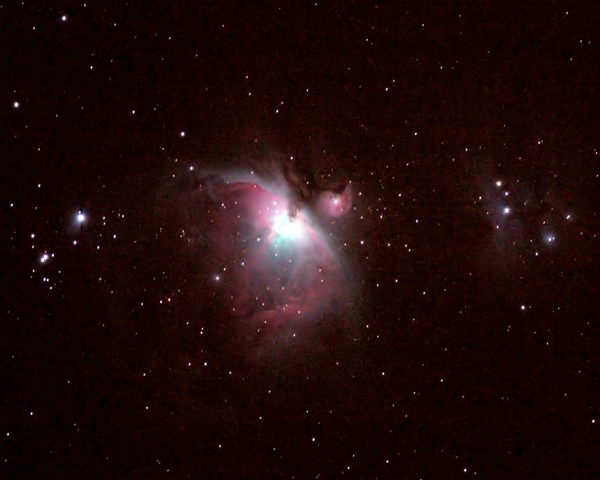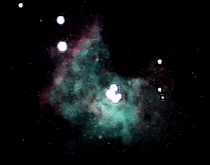GREAT ORION NEBULA (M42)
2015 February 21, 10:47 p.m. EST (Feb. 22, 03:47 UT)
Rosemary Hill Observatory • Bronson • Florida
« RETURN TO THE MAIN RHO PICTURE PAGE »
RETURN TO STAR CATEGORIES
RETURN TO PICTURE CATEGORIES
Images © 2004–2015 H.L. Cohen
Email Cohen followed by @astro.ufl.edu
Last updated 2015 May 18
2015 February 21, 10:47 p.m. EST (Feb. 22, 03:47 UT)
Rosemary Hill Observatory • Bronson • Florida
 Photo Details 2015 Feb. 21, 10:47 p.m. EST TeleVue 127 mm, f/5.2 APO Refractor, Foc. Len. 660 mm Camera: Canon DSLR EOS 5D II, Exposure 15 sec, f/5.2 (ISO 3200) |
OBSERVATIONAL CHALLENGES
What object in the southern celestial hemisphere would vastly outshine the Orion Nebula if placed just as close as the Orion nebula? Hint: Object is not in the Milky Way Galaxy but a member of a nearby galaxy. ANSWER HERE
|
« RETURN TO THE MAIN RHO PICTURE PAGE »
RETURN TO STAR CATEGORIES
RETURN TO PICTURE CATEGORIES
Images © 2004–2015 H.L. Cohen
Email Cohen followed by @astro.ufl.edu
Last updated 2015 May 18
